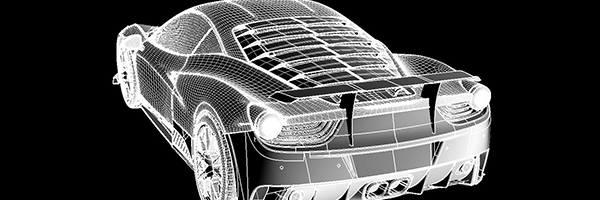Following hot on the heels of the aerospace industry, automotive manufacturers have embraced additive manufacturing as a way to both cut costs and boost performance.
Automotive manufacturers are harnessing the benefits of modern additive manufacturing as it has grown from simply a prototyping service into something much more, using the technology for everything from concept development through production-ready fabrication. Car makers can now create complex geometries impossible or too costly to build any other way, realize design innovations with new techniques or material choices, and capture production efficiencies.
From design and testing through the assembly line, additive manufacturing can be used to save money, save time, and break design barriers in essentially five areas of the automotive manufacturing process.
Design and Functional Testing Prototypes
Additive manufacturing has long been used in the early design phases for new product development. However, until recently, automakers still had to prepare tooling and investment castings for some components pre-production. Unfortunately, every design change required tooling to be adjusted as well—a process both expensive and time-consuming. Advances in both methods and materials available with additive manufacturing now means prototypes of engine manifolds, cylinder heads and more can all be made quickly and efficiently—no tooling required.
The potential savings are substantial. For example, a single component that would have traditionally taken Ford four months and $500,000 to create, they developed for just $3,000 in less than four days using additive manufacturing. Even precision pre-production and form-fit pieces, or functional testing prototypes can be created with selective laser sintering, fused deposition modeling or PolyJet 3D printing to speed parts to production.
Exterior and Interior Body Parts
Automotive manufacturers are now creating more and more final production pieces using modern additive manufacturing technologies, replacing traditionally expensive and slow processes. From exterior pieces such as bumpers and wind breakers to interior knobs, clips and other trim, auto body parts can be created more quickly and at a better price point with additive manufacturing.
Internal Engine and Functional Parts
A wider array of materials and additive manufacturing machines to handle those materials have allowed automotive engineers to envision improvements to valves, vents, fluid handling, exhaust systems, and other functional parts. For example, functional parts with complex geometries can be made as a single piece with additive manufacturing. With fewer pieces per part, there are fewer seams to inhibit the flow of air or liquid and less assembly required, allowing car makers to optimize performance and streamline production.
Custom Tools
While much assembly line work is done by machine, there is still quite a bit of tooling that takes place to create a quality finished product, especially when it comes to higher-end automobile brands. Custom hand tools that are designed specifically for particular testing and assembly functions or designed for better ergonomic can improve productivity and reduce overall costs for car manufacturers. With the wide array of resins and metals to choose from and the ability to do small runs at an affordable price, additive manufacturing is ideal for fabricating custom tools.
Product Innovation and Maximum Performance
Additive manufacturing has given the automotive industry the tools to essentially create a better mousetrap. With fewer design restrictions and more flexible manufacturing capabilities, automotive engineers and designers can now conceptualize and realize custom features that improve aesthetics, ergonomics and performance. With the improved design flexibility, car manufacturers are pushing boundaries related to fuel efficiencies by utilizing capabilities unique to additive manufacturing—lighter weight materials, single-piece construction, and experimental parts with hollow cavities or lattice work that still stand up to the rigors of use.
ProtoCAM’s engineers have experience working with automotive design, engineering and manufacturing companies to determine the best modern additive manufacturing tools and techniques for the job. Get your quote today.

